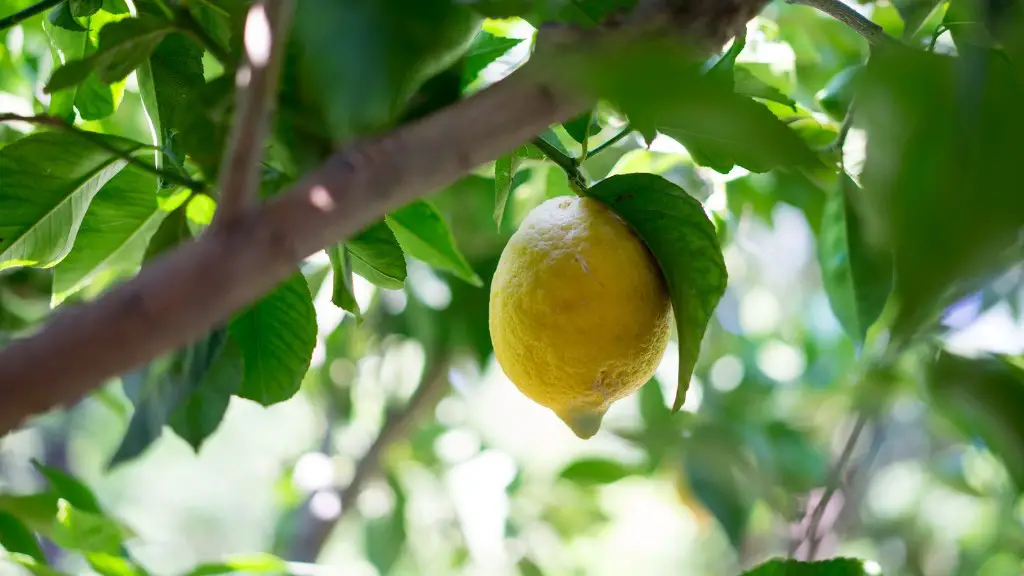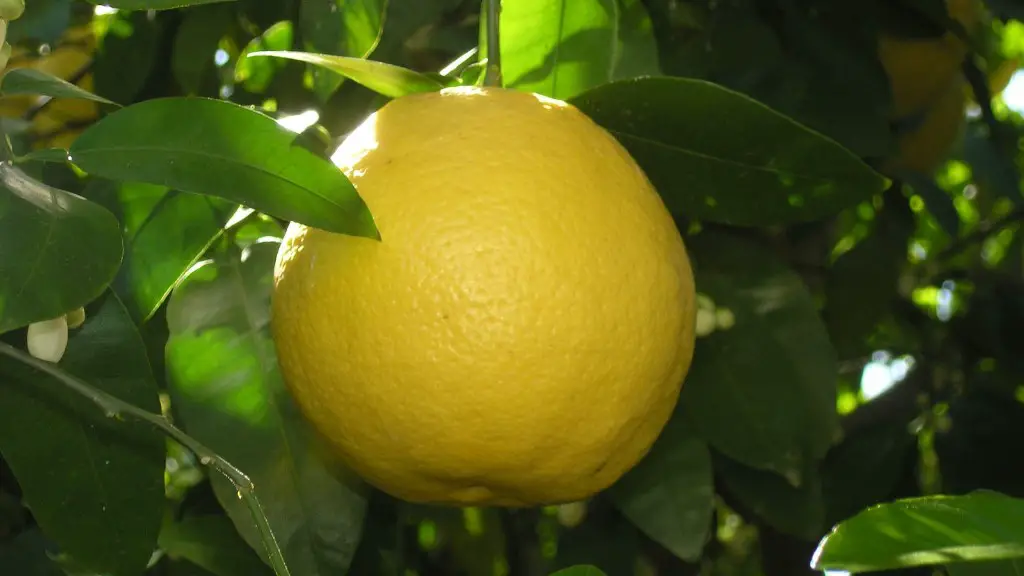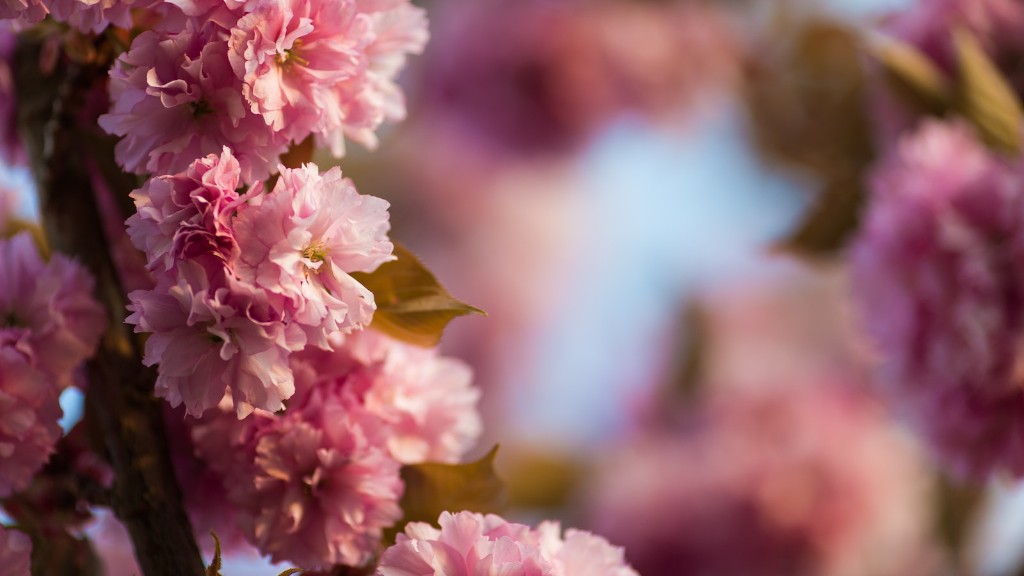Growing a lemon tree from a lemon seed is possible, but it is a long-term project. The seed must first be planted in a 10-12 inch growing container so that it can establish a small root system. The root system should be given space to grow, so an ideal medium is a mixture of soil, compost and perlite. When the seed is planted and watered, the soil should remain damp, but not saturated. Every few days, the container should be checked for signs of root establishment.
The second step requires patience, as the seedling will take several weeks to sprout and stay in the container for several months. When the plant has reached at least four inches in height, with multiple stems, it is ready to be transplanted into a larger pot. Though full sunlight is not necessary for the entire year, for the first two months, the seedling should be exposed to a minimum of 8 hours of direct sunlight per day.
When the seedling is ready for the bigger pot, use either potting soil, coarse sand or humus-rich soil and mix it with additional compost and perlite. Be sure to add a layer of gravel to the bottom of the pot, as this will allow extra drainage–lemons need well-draining soil to reach their full potential. For the first few months of growth, the new home of the lemon tree needs to be exposed to a few hours of sun every day and kept at a consistent temperature.
Throughout this process, it is important to provide the tree with water on a regular basis, but be sure to never over-water the lemon tree. Both if the soil becomes too dry or too wet, it can adversely affect the growth of the lemon tree. Generally, the soil should be kept damp at all times and over-watering should be avoided. If the tree is receiving more water than it needs, the growth and yields will suffer.
In order for the lemon tree to reach its full potential, it will need fertilizer. A combination of organic and synthetic fertilizers will keep the tree growing in the right direction. Organic fertilizers such as compost, humus, manures and worm castings are all great for lemon trees and provide the essential nutrients that the tree needs for growth. As the plant matures, more nutrient-rich fertilizers will be required to sustain growth.
soil Preparation
Soil preparation is an essential part of planting lemon seeds in order to grow a healthy lemon tree. The soil should be a mixture of sand, loam, silt, and clay and should have a pH level between 6.0 and 7.0. This mixture will provide the lemon tree with a medium that allows proper drainage and nutrients. The soil should be tested by a soil plant health laboratory prior to planting to make sure it is correctly prepared.
Before planting, the soil should be given time to rest and if possible, have been exposed to natural elements such as rain or sun. Additionally, adding mulch or compost to the soil can help increase oxygen in the soil, promote healthy bacteria and retain moisture. As the plant matures it may be necessary to add additional amounts of mulch or compost to the soil.
When planting the seeds, it is important to plant them at the correct depth, usually half an inch below the soil surface. Additionally, consider adding additional nutrients to the soil, such as bone meal, fish meal, or composted manure to encourage strong root growth. After planting, water the seedlings regularly and keep the soil damp but not saturated.
Pruning
Pruning is an essential part of growing a healthy lemon tree. During the early stages, when the tree is transitioning from a seedling to a sapling, pruning should be kept light and careful. Removing dead or misdirected branches from the tree will help shape the tree and encourage future growth. As the tree grows and matures, heavy pruning may come into play.
Heavy pruning will help increase light penetration in the canopy and encourage the production of lemons. Pruning should be done in the early spring and again in the late summer to help manage the growth. If the lemon tree is too dense and overcrowded, pruning can be done to remove some branches and open the canopy so light and air can access the tree. More aggressive pruning can be done using loppers, saws, or a pruning saw to shape the tree.
Pruning should always be done with precision and care. The branches should be cut just above a joint and at a 45-degree angle to ensure that the branches heal properly. Pruning also helps stimulate root growth, so removing some of the outer branches allows for maximum nutrients and water to get to the root system. Trimming the tree can also promote bushier growth and help with controlling pests and diseases.
Managing Pests and Diseases
Managing pests and diseases is important for a healthy lemon tree. Proper irrigation and pruning will go a long way in improving the overall health of the tree and making it less prone to pests and diseases. Additionally, preventive measures should be taken to control pests and diseases before they become a problem. This can be done by spraying the leaves with an organic pest repellant or using a neem oil solution.
If pests and diseases are present, the best course of action is to treat them as soon as possible. If the tree is affected by small or large insects, an organic insecticide or natural predator can be used to combat the pests. If the tree is suffering from a disease, a fungicide should be applied to suppress the spread of the disease.
If the tree is struggling, it is important to find the underlying issue(s) that are causing the problems. Issues such as poor soil conditions, lack of sunlight, incorrect watering habits, or lack of fertilizer can all contribute to pest and disease infestations. Addressing these issues can help with controlling diseases and pests, as well as help the tree recover from any previous damage.
Harvesting Lemons
Harvesting lemons from a lemon tree is an exciting moment for many gardeners. Freshly picked lemons can have a much better flavor than store-bought lemons and can make a great addition to any recipe. Lemons ripen slowly, so the fruit can stay on the tree for a few weeks or months before they are ready to be harvested.
The best way to tell when the lemons are ready to be harvested is by size and color. The lemons should be a full yellow color and large enough to be picked. Usually the lemons grow in clusters, so cutting a stem with a few lemons on it will be the most efficient way to harvest them. The stem should also be cut right above a leaf so that the tree can easily recover.
If the lemons are used in cooking or baking, they should be washed before use and it is recommended to use a soft brush to remove any dirt or debris. Lemons that are not going to be used can be stored in a refrigerator for up to a week. Additionally, the lemons can be frozen for long-term storage or be preserved in various ways such as using a dehydrator or canning. Harvesting and storing lemons from a lemon tree can be a rewarding experience.
Fertilizing
Fertilizing is an essential part of growing a healthy lemon tree. A combination of organic and synthetic fertilizers should be used to provide the lemon tree with the nutrients it needs throughout its lifespan. Organic fertilizers are a great option for young trees, as they provide essential nutrients and can increase the organic matter of the soil. Options such as compost, humus, manures, and worm castings can all be used.
Additionally, synthetic fertilizers are a great option for moderate to mature trees. Synthetic fertilizers can be used throughout the growing season and should be tailored to specific growth stages. As the tree matures, more nitrogen will be removed and more micronutrients will be needed for the tree to reach its full potential. Synthetic fertilizers should be applied in small amounts and watered in to ensure that the tree absorbs all the nutrients.
Along with fertilizers, another great way to keep a lemon tree healthy is by adding micronutrients. Micronutrients such as iron, manganese, zinc, and boron are all important for a healthy tree and can be applied in the form of foliar sprays or soil treatments. These micronutrients will help the tree fight off disease, increase flower and fruit production, and help with overall growth.
Fertilizing a lemon tree is an essential part of ensuring that it reaches its full potential and produces healthy lemons. A combination of organic and synthetic fertilizers, as well as micronutrients, should be considered when providing additional nutrients to a lemon tree.
Caring for A Lemon Tree
Caring for a lemon tree takes time and patience, but can be a rewarding experience for anyone wanting to grow a healthy lemon tree and harvest the sweet fruits. Proper soil preparation is essential to create the perfect growing environment and maintaining optimal watering, fertilizing, pruning, and pest management habits will all contribute to the success of the tree. Additionally, harvesting and storing lemons needs to be done at the right time and in the right way.
Lemon trees thrive best in warm climates and should be subject to at least 8 hours of direct sunlight per day. The soil should be provide with a well-draining medium and maintained at a moist, consistent level. Pruning should be done regularly to promote healthy growth and to increase light penetration. Fertilization should be done on a regular basis with a combination of organic and synthetic fertilizers.
Pests and diseases should be controlled as soon as possible and preventive measures are recommended in order to stop them from becoming a problem. Finally, harvesting should be done when the lemons have fully matured and can be stored for a week in the refrigerator or preserved for longer-term storage. Caring for a lemon tree is not easy, but it can be a rewarding experience for those willing to put in the effort.





